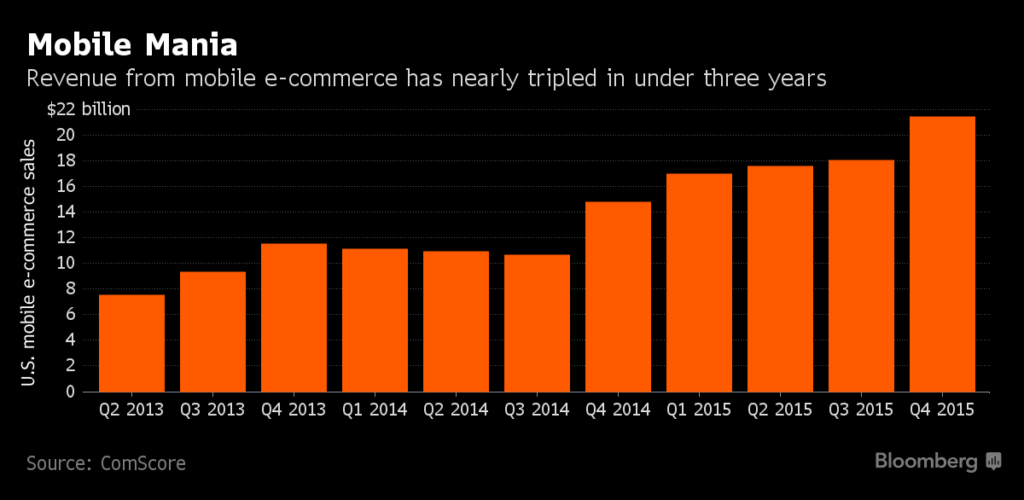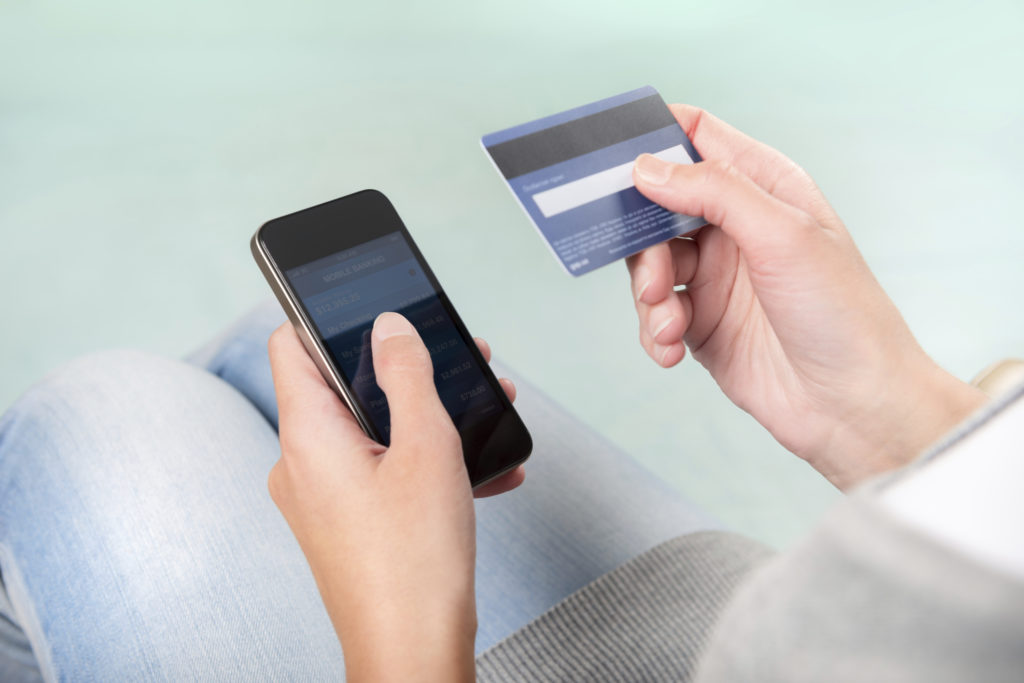When it comes to shopping on the web, more people prefer the mobile route.
A new study by Demandware indicated that smartphones made up 45.1 percent of web shopping traffic for the first quarter of this year, just barely squeaking past the 45 percent that prefer desktop computers, per Bloomberg. Demandware was quick to note that the numbers for mobile will continue to be on the rise, as phones are set to reach 60 percent of eCommerce visits by the end of 2017.

The chart above breaks down just how much mobile phones have grown with eCommerce over the past few years, going from $7 billion in the second quarter of 2013 to $22 billion for the fourth quarter of 2015. That’s triple the amount of increase in just over two years.
That said, it’s just a matter of retailers finding a way to make the most out of the format, and doing away with problematic issues that would prevent sales on their site, including checkout times that last longer than usual (a turn-off for those that are into impulse buys) and payment procedures with potential security issues.
Demandware made note of this, indicating that completion of orders on mobile is actually 11 percent lower than the combined rate through all other devices, including desktop computers.
“If they can get it right on mobile today and tomorrow, that’s where they’re going to see a lot of value going forward,” said Rick Kenney, who put together the study and serves as head of consumer insights for Demandware.
ECommerce continues to be a big deal for retailing partners, with sales reaching an estimated $92.8 billion for the first quarter of 2016, which makes up 7.8 percent of total retail sales. While this is a small percentage, it’s grown exponentially from 1.3 percent in 2002.
With that, more people prefer mobile shopping as a convenient way to buy the things they want. A comScore report noted that mobile sales have managed to double the amount from 2013 to 2015, and Demandware added that shoppers will use their devices now more than ever, leading to its projected increase by the end of 2017.
More companies are grasping ways to make mobile shopping more convenient, including PayPal with its quick transfer system, and devoted payment set-ups for iOS and Android devices, through Apple Pay and Android Pay, respectively.
Poonam Goyal, senior retail analyst for Bloomberg Intelligence, noted that bigger retailers are seeing the biggest boost, thanks to devoted apps like Target’s Cartwheel, which offers shoppers discounts on the fly. “Retailing today is more about the customer experience than it is about anything else,” she noted.
As for where the market will go from here, the report noted that a “mobile only” space could be coming in the next few years. eMarketer added an estimate that indicates around 71 percent of US consumers will have some form of smartphone to utilize for shopping in just a couple years’ time—a leap from the current 59 percent estimate. Demandware was aware of this, and noted that by the end of 2018, phones will zip past computers for online orders by a margin of 13 percent.

